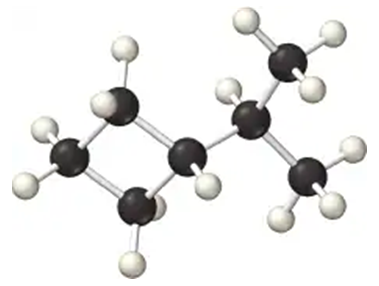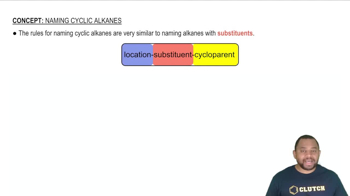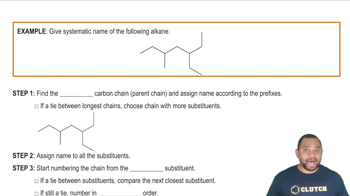Give the structure and name of the cycloalkanes described.
(a) A compound whose molecular formula is C6H12 and contains a five-membered ring

 Verified step by step guidance
Verified step by step guidance Verified video answer for a similar problem:
Verified video answer for a similar problem:



 :36m
:36mMaster Rules for Naming Cyclic Alkanes Concept 1 with a bite sized video explanation from Jules
Start learning